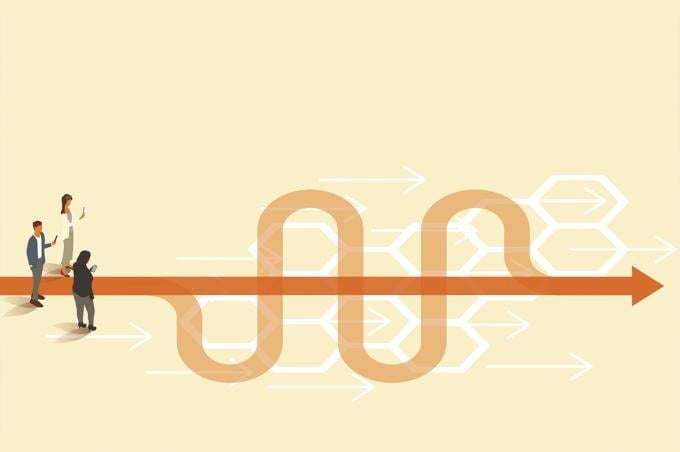Physician burnout is largely influenced by workplace structure and experiences. That is where team-based and safe-care delivery can help, according to a study published in The Joint Commission Journal on Quality and Patient Safety.
In the study, “Teamwork Climate, Safety Climate, and Physician Burnout: A National, Cross-Sectional Study,” 1,218 U.S. doctors nationwide were surveyed about burnout and workplace experiences, including teamwork and safety climate. Teamwork climate is assessed through six questions, while safety climate is measured via seven questions—all measured on a five-point Likert scale that ranges from disagree strongly to agree strongly. Questions are averaged by domain to develop mean scores for teamwork and safety climate.
The researchers concluded that there is a strong relationship between the amount of teamwork and safety in physicians’ work environments and burnout. It is a relationship that showed improvements on those metrics even when compared with slightly different work climates.
Among the physicians surveyed, 27.4% reported high depersonalization, 39.9% reported high emotional exhaustion and 45.6% met the criteria for burnout. But even small increases in teamwork and safety climate were related to improvements in physicians’ feelings of depersonalization, burnout or emotional exhaustion.
“It is logical that better safety climate and better teamwork climate are associated with lower burnout. I'm not sure we knew whether there would be this kind of dose response,” said the study’s lead author, Lisa Rotenstein, MD.
The study’s authors concluded that each one-point increase in teamwork climate was associated with 16% lower odds of high emotional exhaustion, 26% lower odds of high depersonalization and 20% lower odds of burnout. Similarly, each one-point increase in safety climate was associated with 21% lower odds of high emotional exhaustion, 10% lower odds of high depersonalization and 19% lower odds of burnout.
Dr. Rotenstein called the results “striking,” suggesting that they offer hope even to struggling health care organizations that may not be able to completely overhaul their environments overnight. Making slow, steady improvements will create clear results, she argued.
“There is value in incremental change, and that is valuable for health care leaders as well,” said Dr. Rotenstein, an internist and medical director of ambulatory quality and safety at University of California, San Francisco Health.
“It's hard, especially across a large organization, to change the teamwork climate and the safety climate overnight, but what's important is the incremental work in this space,” she added.
Fighting burnout, step by step
Physician burnout presents a continued challenge in U.S. health care. Though burnout appears to have fallen since the high-water mark during the COVID-19 public health emergency, rates remain high and troubling, with almost half of physicians reporting symptoms of burnout.
The good news, Dr. Rotenstein said, is that there are established ways to increase safety and team-based care in health care settings, and those methods will yield positive results in the lives of physicians who work there.
“Organizations can lean on a really good body of evidence as they're considering how to take these factors and enact change,” she said.
The process isn’t painless, though.
“You have to equip managers across your organization to be promoting good teamwork structures and a strong safety climate, and that is not trivial. … This is not work that the leader at the top can dictate,” Dr. Rotenstein said. “It actually has to do with empowering local leaders to create these climates day by day and make physicians feel valued and feel like they are a strong part of the organization that has a say.”
Giving control back to physicians
The researchers also concluded that physicians practicing in an academic medical center had lower odds of depersonalization and burnout compared with those in private practice. These results may be explained by the greater flexibility afforded to academic physicians to lessen their hours or alter the structure of their work, said Dr. Rotenstein.
“In academic environments, often folks are able to change the content of their work without stepping away from clinical work completely,” she said. “That's obviously not possible in every environment but … the health care system is coming back to this idea of: How do you get physicians a little bit of control over their work lives?”
“If it doesn't feel feasible for physicians to have a full FTE [full-time equivalent] of work, which we know is prevalent across the United States given the encompassing nature of patient care, then it's worth it for multiple types of organizations to think about how they can sustain physician careers in creative ways, maybe looking at the examples from academic environments,” Dr. Rotenstein said.
Other studies have revealed that giving control back to physicians can lead to improvements in many areas, she said.
“Our previous work has shown the ability of physicians working in physician-owned practices to better improve quality in their practices without increasing burnout,” Dr. Rotenstein said. “The reason for those findings is because those physicians have more control over their practice environments over their teams, over the climate.”
The findings offer an opportunity for health systems and physician practices to examine the way physicians’ work environments are helping them—as well as their patients.
“Alongside individual-focused interventions, which have often been a focus of burnout relief efforts … it might be helpful to get back to the basics to improve how our teams function and the culture of our organizations,” Dr. Rotenstein said. “But that is easier said than done.”




